There is no longer such a thing as “business as usual”. Companies of all sizes are expanding their mission beyond pure profit to take care of their communities and make a positive impact on their communities—and consumers are noticing. In fact, recent data shows that consumers are more likely to support companies that are actively engaged with cause marketing.
So, we know that in 2021, cause marketing is a requirement for any brand looking to win consumer loyalty and ensure longevity. But where should you begin? The first step is to choose the cause you want to support (link to blog about how to choose what cause to support)—and that requires some research.

Here are our top suggestions on what to research before donating to a charity and forming a cause marketing partnership.
What is cause marketing?
Cause marketing involves the collaboration between a for-profit business and a nonprofit organization for a common benefit. Cause advertising can also refer to social responsibility or charitable campaigns taken on by for-profit brands. The benefits of cause marketing strategy include brand loyalty from your customers and raised awareness for a cause.
At Refuel Agency, we’ve been executing impactful cause marketing campaigns with nonprofits and brands for over 30 years, educating and involving the niche audiences we deliver.
Related reading: 5 Cause Marketing Mistakes to Avoid in Your Next Campaign
1. Where to research
You don’t have to go into your research blindly. Luckily, there are a handful of websites that make researching causes and organizations simple and fast. Here are a few places to start when it comes to determining if a cause organization is the right fit for your campaigns.
The I.R.S.
If you want to make sure that the organization you’re working with is a 501(3)c, you find this information through the I.R.S. website, where they have a searchable database of charities. In order to receive a tax deduction for your donation, the charity must be a qualified organization.
Charity Navigator and Guidestar
Both of these websites help you understand exactly what percentage of donations goes directly to the cause. Some charities are especially lean when it comes to overhead, whereas others have a larger budget for overhead. A general rule of thumb is to look for organizations that use less than 30% of their total budget for administration and fundraising.
The Better Business Bureau
The Better Business Bureau is where to check to see if any complaints were filed against the charity you’re researching. Of course, take these reviews with a grain of salt, but it’s still helpful to understand how this organization is perceived and the range of experiences people have had with it.
Read next: How to Use Micro-Moments to Build Consumer Trust in 2021
2. Alignment
The first thing you want to research before getting involved with a charity or nonprofit is your alignment. What are your values, and what are the nonprofit’s values? What are your goals? Mission, value, and goal alignment is critical to successful partnership, and you should essentially seek to further one another’s missions.
For example, it doesn’t make sense for an oil company to partner with a nature conservancy—their missions would undercut each other’s. Look for alignment first and foremost.
Read next: 5 Examples of Brands That Got Cause Marketing Right
3. Leadership
The second thing you want to research is leadership in the organization you’re looking to partner with. Do they have strong backgrounds with a history of progress to their current role? Do they appear engaged with the charity?
Read next: What Is Cause Marketing, and How Does It Drive Brand Loyalty?
4. Strategy and Goals
It’s always recommended to take a good look at your chosen organization’s goals, as well as the strategy they’ve put in place to achieve them. How does this organization explain their work? Do they work independently, or do they work in conjunction with other organizations? How do they measure progress towards their goals, and ensure that they are making progress? Is progress measured by internal methods or through an independent organization?
Understanding exactly how your chosen charity is achieving its goals will help you determine if you feel that your support would be beneficial, and lay the groundwork for a strong partnership.
Read next: 5 Things Marketers Should Know About Teen Cause Marketing Campaigns
5. Financials
Finally, you should take a look at your charity’s financials. Nonprofits don’t run themselves; just like businesses, they need staff, marketing, accounting, space, and supplies. Looking at an organization’s financials will help you understand exactly how it all breaks down. And while a high proportion of overhead can raise red some flags, it’s not always a cause for concern. Nonprofits may be ramping up their marketing efforts to attract more donations and maintain talented staff.
Read next: 101+ Marketing Statistics Every Marketer Should Know
Doing your due diligence before selecting a nonprofit to partner with for your cause marketing campaigns will provide the foundation for a strong partnership and even stronger results.
Looking to Refuel your cause marketing campaigns? Take a look at our cause marketing portfolio, and contact us today to receive your custom media plan for targeted impact.



![Read more about the article How Brands Can Give Back to Their Customers This Giving Tuesday [Resources Included!]](https://www.refuelagency.com/wp-content/uploads/2020/11/iStock-1064841594-e1604617499760-768x614.jpg)